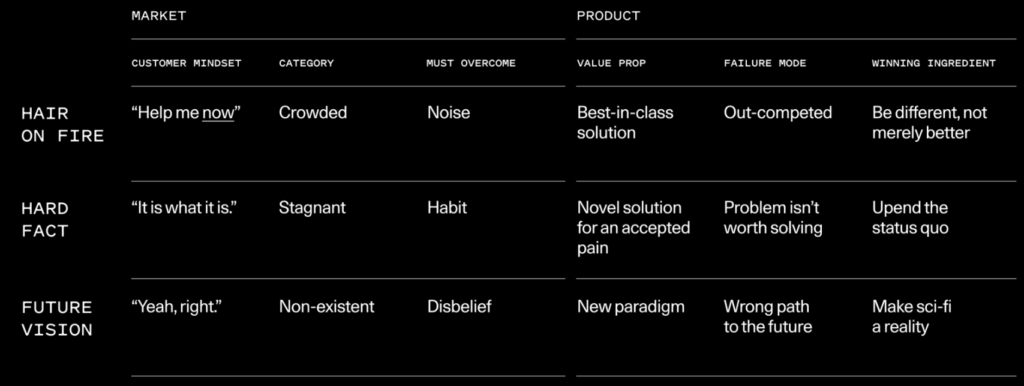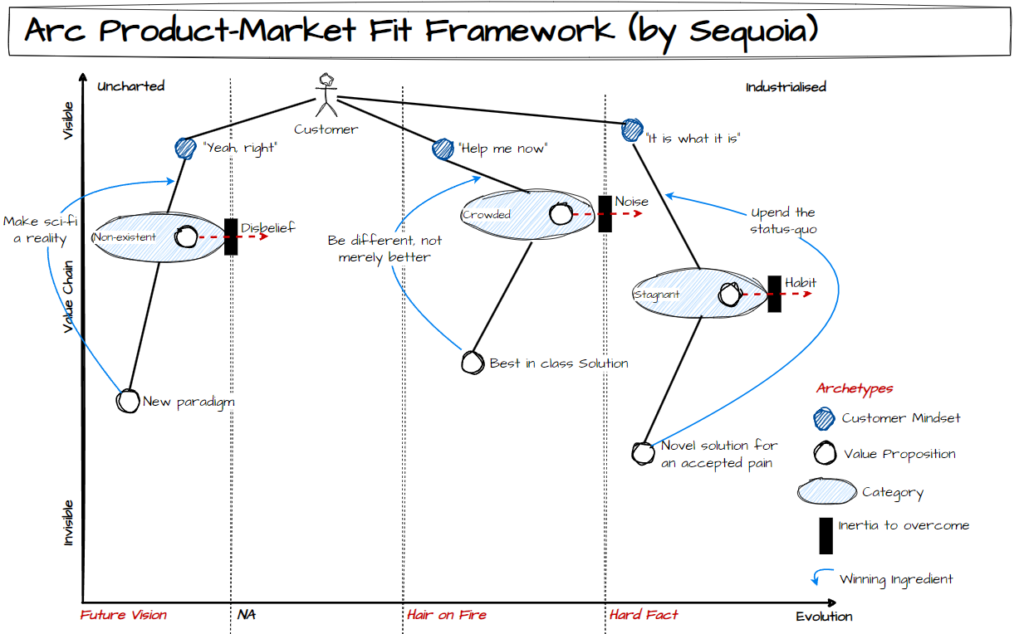This framework created by Sequoia is described here. The article is very interesting, I suggest you to read it if this is an interesting topic to you (because you work in Venture Capital or if you are trying to seeking financing).
Finding product-market fit is key for every early-stage startup. Sequoia walks founders through this following framework during the analysis they do for pre-seed and seed stage companies (Arc).
Sequoia does not diagnoses whether you have product-market fit (PMF), they tell you:
“in this framework we have three distinct archetypes of PMF, which type of company are you building?”
In this way they get better understanding of your product’s place in the market and determine how your company operates.
These are the 3 archetypes and its features:

The table and the text describing the article, again I suggest you read it.
Let’s draw the competitive landscape in a Wardley Map
It’s very interesting how the things work, and I have done a Wardley Map about how this framework just tries to understand where you are in the map.
So, yes I did a map, but in addition to it, I modified some basic elements of the map to make it fit with the table above.

Note that:
- Sequoia is not interested in “custom build” companies, they will invest in companies in other stages.
- They identify how the market is shaped in each stage, category: non-existent, crowded, stagnant.
- They understand there’s inertia in the customers and they try to understand if you recognize that inertia you have to overcome.
- To be attractive for the customer you should have a valid value proposition and a “winning ingredient”. I have represented with a blue arrow so you have to overcome the inertia of the customer, the status-quo or challenges of the market.
Relevant questions for each area of interes:
They also offer some relevant questions that every startup CEO should review before to meet them in Arc (Sequoia’s company-building immersion for pre-seed and seed stage companies).

So now what?
Sequoia publish this framework to set some ground rules in the conversations with startups and do it with a concrete nomenclature.
The natural move of the startup companies attending the ARC evaluation process is to understand the published rules of the game and prepare themselves to fit in one of these archetypes.
So now what?
- What is behind the scene?
- What are the second-order thinking aspects we should pay attention?
- What are the relevant questions they are going to ask to startup founders?
- Is it more relevant the ideas or products? or are the people defending them the key point of these series?